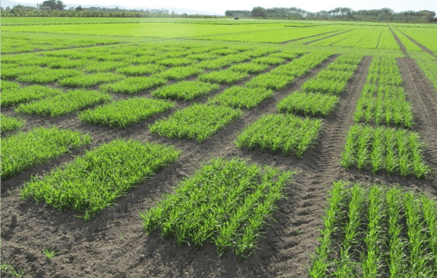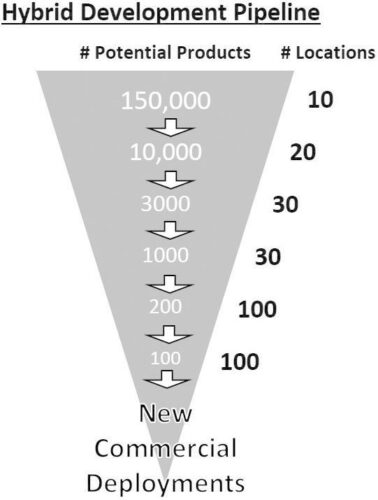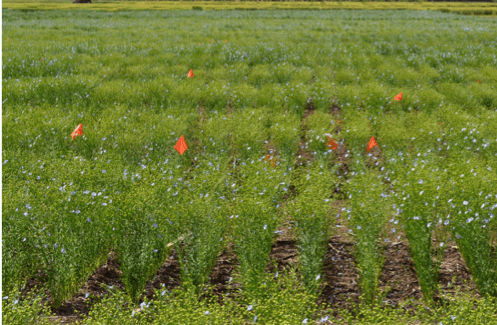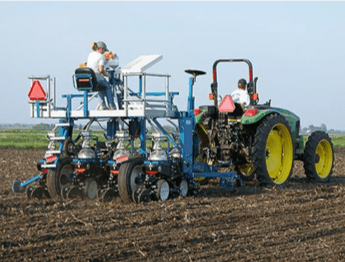Part 4: Seeding Variety Test Plots
This is the fourth of a series of #LabToField blogs that will explain the yearly cycle of variety development. Click here to read Part 1: Phytotrons, Part 2: Agriculture Greenhouses, or Part 3: The U of S Seed Lab.
Kernen Research Farm
The majority of U of S breeding and research trials are grown at the Kernen Research Farm located east of Saskatoon. In 1977, Fredrick Wesley Kernen, a farmer from the area and former employee of the College of Agriculture, gifted the University with two sections of agricultural land. Since this time, the land has been used as a research farm extensively to advance crop research and development in Saskatchewan. Breeding programs on campus, as well as agronomy, crop protection, ecology, and grazing programs have utilized the land at the Kernen Research Farm for their research. The farm is also home to the CDC Breeder Seed Facility, which is used to clean breeder seed before it is shipped to Western Canadian seed growers and companies.
Variety Development Field Trials
Field trials allow a large population of breeding lines to be grown in natural conditions, and allow researchers to discover how the plants within each line will react to varying environmental conditions. The breeding process starts with thousands of varietal lines. As shown by Glenn, et al. (2017), in order to produce a new commercialized crop variety, thousands of breeding lines are needed in the beginning of the process to lead generations of plant research to the final commercialized variety.
The youngest generational material is grown in small plots ranging from 1-4 rows, or in short rows. Ideally, data collection and selection is completed on plants located in the inside rows of the plots to minimize the influence of “border effects”. These effects can cause plants to act differently on the outside of a plot due to factors such as decreased competition or increased moisture. As the superior lines are selected each generation, the number of potential lines becomes smaller and the number of locations in which the lines are grown increases, as does the plot size. This allows for the most promising breeding lines to be grown in a multitude of locations and conditions.
Plants with novel traits (PNT) have their own set of regulations when conducting field trials. PNTs contain traits that are new to the Canadian environment and/or which may have the potential to affect the specific use and safety of the plant with respect to the environment and human health. PNT trials may include plants developed through biotechnology, mutagenesis, or conventional plant breeding. Regulations for PNT trials include restrictions on trial size and number of locations, minimum isolation distances from other sexually compatible plants, and stringent disposal regulations to avoid seeds from these plants escaping into the natural environment. For more information regarding these regulations, visit the CFIA’s webpage: Conducting Confined Research Field Trials of Plants with Novel Traits.
Seeding Variety Development Plots
The process of seeding variety development plots is very complex and requires high attention to detail. Seeds are carefully pre-counted and packaged in labelled envelopes to ensure that a consistent seeding rate is achieved and that only seeds of the desired variety are planted within each plot. Breeding and research programs use specialized, small-plot equipment to achieve precision and accuracy in their planting operations. Cone seeders are used to obtain an even distribution of seed and are used most frequently in breeding programs. However, research programs may also use tray seeders in which seeds are packaged into small compartments of the seeding trays, each representing one row of plants.
During seeding, someone is required to ride on the back of the cone planter and manage the seed. They pour the seed from the envelope into the funnel above the cone and “trip” the seed as the machine moves over the plot boundaries (usually marked with a flag). “Tripping” the seed by pulling a lever causes it to fall into the cone, and as the cone revolves the seed falls into a hole and down to the sowing shears. Before the machine moves past the end of the plot, the seed for the next plot has already been poured into the funnel. Precision seeding of variety development plots leads to accurate results, and subsequently, the ability to duplicate results in future trials.
What Comes Next for Breeding Programs?
Seeding is an extremely hectic time for the U of S breeding programs who face unpredictable weather, temperature, and time constraints. This year, the Durum and Canada Prairie Spring Wheat breeding program alone will seed roughly 46,000 plots! Needless to say, employees of the breeding programs spend many long days in the field ensuring that each plot is seeded correctly. The hectic season does not finish with the completion of seeding, though. There is data to be collected, and weeding, spraying, and other field activities keep the researchers busy for the remainder of the growing season.
The Kernen Research Farm is extremely important to the variety development process. The expanse of land available and state-of-the-art facilities and equipment that exist on the farm allow for innovative research activities to be conducted throughout the year. The successful completion of seeding each spring sets the stage for the rest of the growing season, ensuring that the most promising varieties are selected to advance to subsequent generational testing and that the best available seeds are commercialized for use on Canadian farms.
I would like to thank Russell Lawrie from the Durum and CPS Breeding Program for answering all of my seeding questions.





